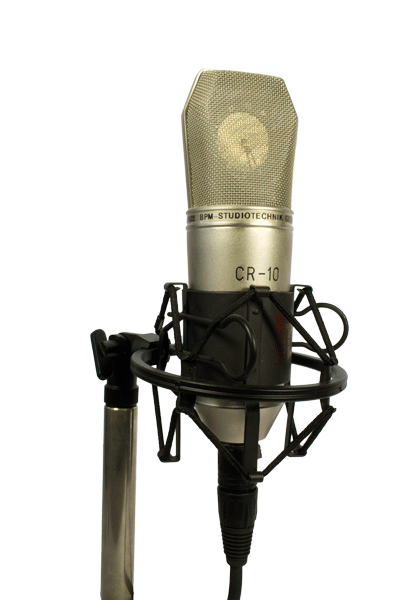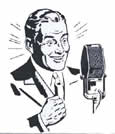|
The BPM CR 10 is a 'modern vintage' large diaphragm condenser microphone, from 1997. It was made by B.P.M. Audiotechnik in Berlin, and was meant to be a competitor to the famous Neumann U 87, that had been the studio standard for over thirty years, for the recording of vocals and instruments. The CR 10 was not a multi-pattern mic, like the U 87, but had only a cardioid pattern, the pattern that is used in 80% of the recording sessions. Since this did not require the double membrane, necessary to be able to switch the patterns, the cost to produce it was much lower: just under 1000 D Marks (600 dollars), which brought the mic in the price range that project studios and semi professionals could afford.
At the time Neumann did not target that market and had no products that were in the same price range (in 1998 they presented their TLM 103 cardioid budget mic).
The CR 10 had a different look, but the sound was resembling that of the U 87 closely, with deep basses, transparent highs, precise mid-tones, and a wonderful spatial imaging. Since the designers had earlier been employed by Neumann, this was to be expected. Like the Neumanns, the BPMs were also pieces of excellent workmanship. They all came in a dedicated aluminum case and had their own shockmount. In several recording magazine tests the CR 10 shone as a winner.
Around the same time the first Chinese made cheap condenser microphones surfaced, but the difference in quality was obvious (although some thought that the BPMs were also of Chines origin).
BPM made some multi-pattern large diaphragms mics as well: the CR 73 and a tube version: CR 76.
Because these resembled the look of the Neumann U 87 too closely, they were replaced with versions that were given the same design as the CR 10: the CR 73 II, and the TB 95.
Later the CR 10 was updated to CR 10 s, the CR 73 II to CR 95. The company went out of business; unfortunately BPM was no good at marketing and their microphones were never widely used in studios.
Those that do use them praise their sound and quality. Whenever they surface, there are often eager buyers. |
|



 Video's
Video's Contact
Contact
